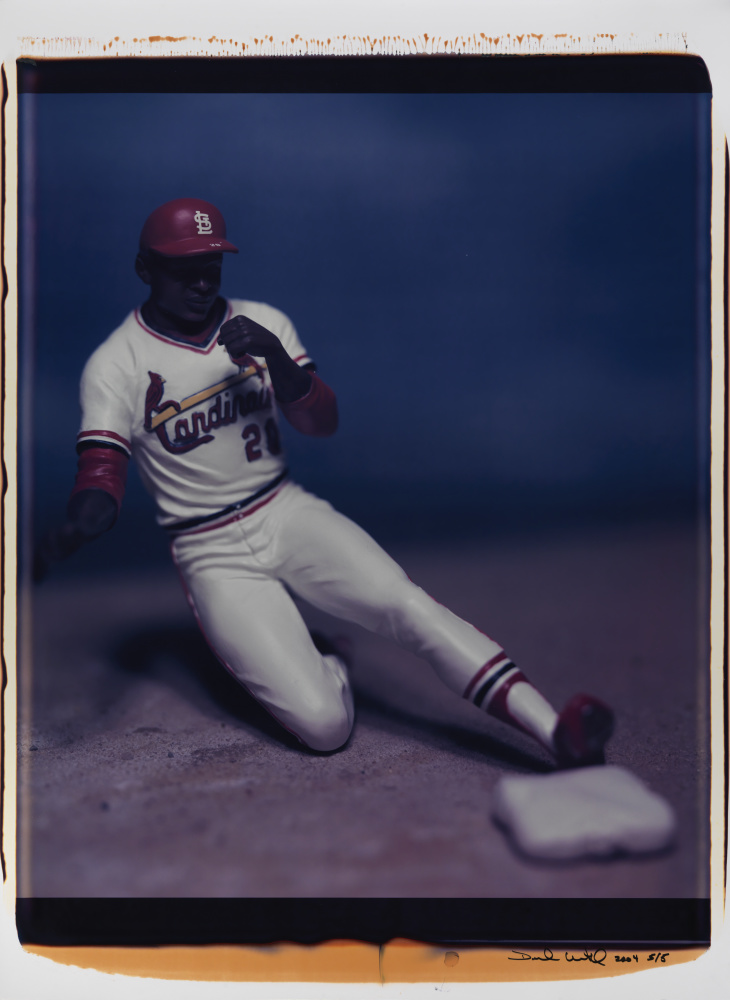- Closed today. View hours.
- Parking & Directions
- Free Admission
Living Pictures of American Culture
Seth Feman, PhD, Deputy Director for Art & Interpretation and Curator of Photography
At a glance, David Levinthal’s photographs seem like real-world images taken on the fly. A longer and closer look reveals qualities that are less familiar and even strange. Since the early 1970s, the artist has worked with toy figures—plastic cowboys, Barbies, and athletes—to create tableaux vivants (living pictures) that he then photographs. By using selective focus, he brings one area into sharp clarity while the rest of the image blurs away. The technique creates a sense of depth and motion and, in some ways, mimics how the human eye works— bringing only a small detail into view and allowing the imagination to fill in the rest. Levinthal constructs his works to emphasize this effect, making it hard to tell if the figures are toys or real people while the mind draws on memories, myths, and imagination to complete the scenes.

In late 2019, the Chrysler received a gift of more than fifty-five works by Levinthal from an anonymous donor. The gift spans the past thirty years of the artist’s career and includes images of gun-slinging cowboys that recall fantasies of the Wild West, Barbies dressed in pearls, toys posed as pinup girls, and numerous baseball and hockey heroes. The Chrysler also received a series that uses posed metal figurines to illustrate Uncle Tom’s Cabin, the famed anti-slavery story originally published by Harriet Beecher Stowe in 1852. For most of the works, Levinthal used a rare Polaroid 20×24 Land Camera, which produces enormous, saturated images and gives Levinthal’s scenes a larger-than-life look and feel. Fewer than half-a-dozen Polaroid 20×24 Land Cameras exist today.
While focusing on many of the people and events that shaped nineteenth- and twentieth-century American culture, the images offer a playful way to ask serious questions about common myths and stereotypes. Levinthal once said, “toys and the way society socializes its young with them constantly intrigue me… Society imparts a sense of values through play. We use toys so much as surrogates for our beliefs and desires [that] they take on a life of their own.”

Photographs from Levinthal’s Baseball series examine one of America’s favorite pastimes. Some seem to simply highlight an individual player’s fame and reputation. One work depicts Lou Brock of the St. Louis Cardinals, famous for his stolen-base record, sliding into a plate. Another presents Lou Gehring after a swing, his face showing a gentle smile that suggests a successful hit and perhaps his enduring optimism. Yet others offer more challenging questions. An image of Omar Vizquel shows the player running to make a catch. Although his face is in shadow and turned away from the camera, the Cleveland Indians’ mascot, Chief Wahoo, looks back at us from the patch on Vizquel’s shoulder.
Together, these images that depict famous baseball players, grimacing hockey players, women in pin-up garb, and swaggering cowboys take a critical look at nostalgia, beauty, heroism, masculinity, femininity, and celebrity—core tropes of American mythology.

